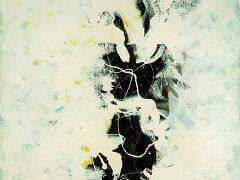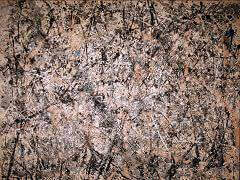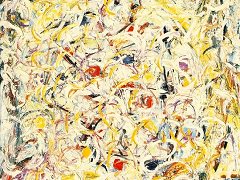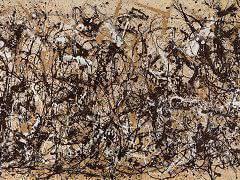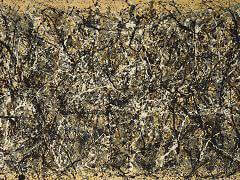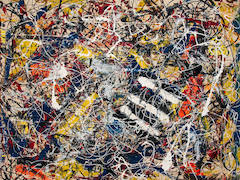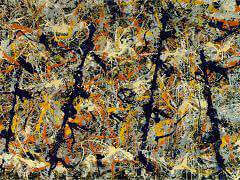Full Fathom Five, 1947 by Jackson Pollock
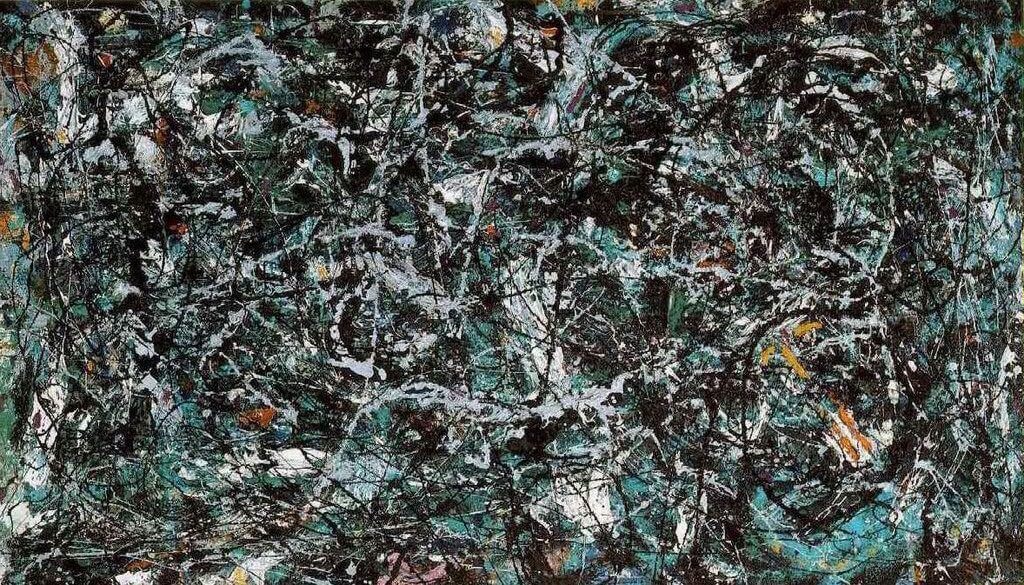
Full Fathom Five is one of the earliest masterpieces of Pollock's drip technique. The actual origins and initial development of this technique have never been fully explained, except by reading back from fuller photographic
evidence produced about 1950, two or three years after this work was painted. Like other practical breakthroughs in twentieth-century painting, 'creative accident' seems likely to have played an important part, as Pollock probed
and tested methods of paint application which promote the continuousness of line rather than the broken lines inevitable in the constant reloadings and readjustments of conventional brushwork. His solution was to pour from a can
of domestic paint along a stick resting inside the container, so that a constant 'beam' of pigment came into contact with the canvas (which he left unstretched on the studio floor). The character of the line was determined by
certain physical and material variables that could be combined in almost infinite permutations: the viscosity of the paint (controlled by thinning and dilution); the angle and hence speed of the pouring; and the dynamics of
Pollock's bodily gestures, his sweep and rhythm, especially in the wrist, arm and shoulder. 'Like a seismograph', noted writer Wemer Haftmann 'the painting recorded the energies and states of the man who drew it.' In addition,
Pollock would flick, splatter, and dab subsidiary colors on to the dominant linear configuration.
The title, suggested by Pollock's neighbor, quotes from The Tempest by William Shakespeare, wherein Ariel describes a death by shipwreck:
"Full fathom five thy father lies / Of his bones are coral made / Those are pearls that were his eyes."
Pollock has embedded nails, tacks, buttons, keys, coins, a torn cigarette, matches, and paint-tube tops into the surface - witnesses of the accidental nature of the 'painting' process and of the legitimacy of the trouser-pocket
paraphernalia - as three-dimensional textural agents to amplify the signifying potential of the image. These alien materials, however, are subordinate to the overall design. They are, interestingly, almost invisible in normal
reproductions of the painting; suffocated by the overwhelming presence of paint their function is analogous to the smears and touches of color, providing resistance and difference in the optical pattern.



